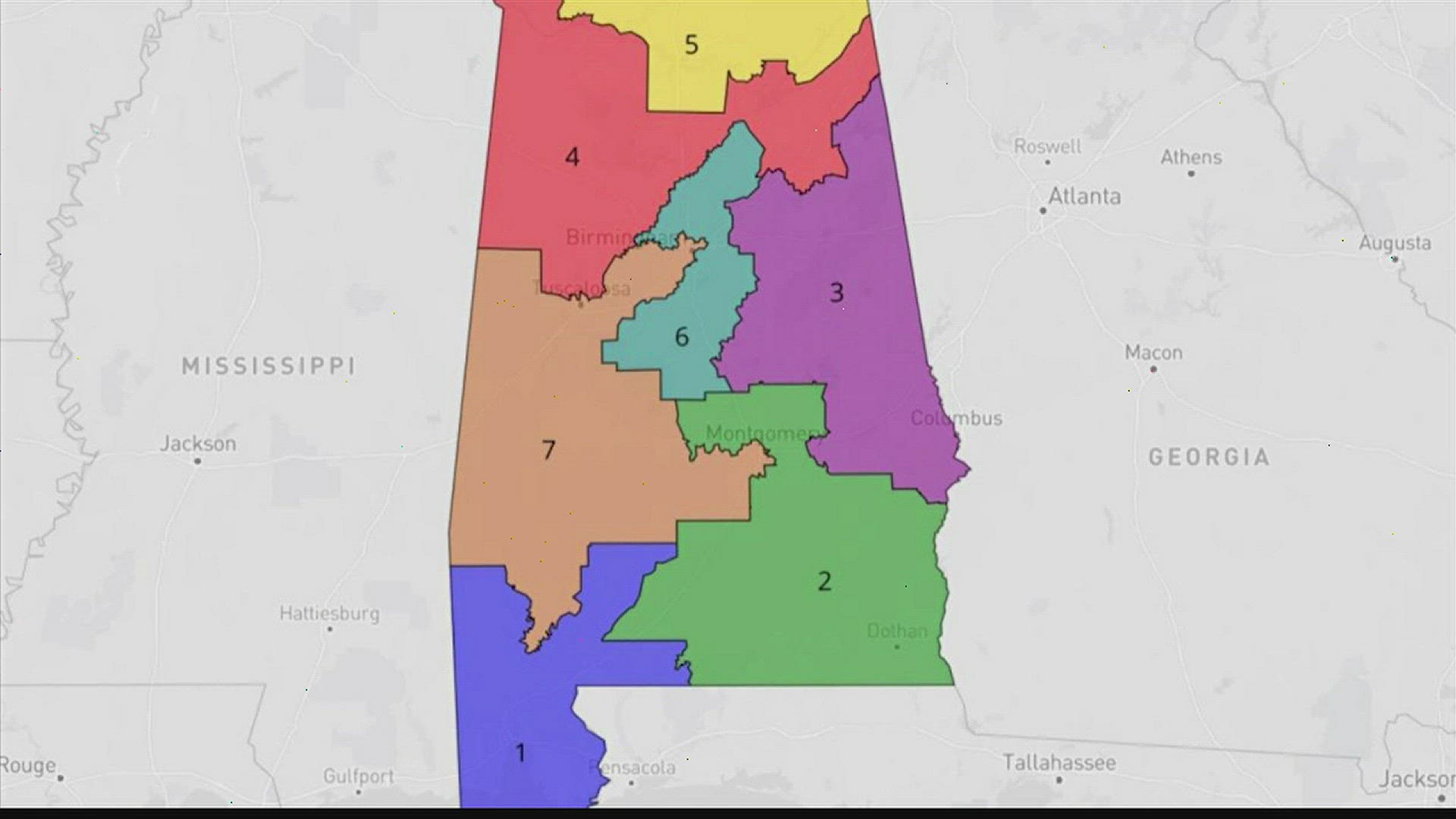HUNTSVILLE, Ala. — Friday, a map depicting just one majority-black congressional district out of seven in a state where black residents make up 27% of the population was approved, which seems to undermine a U.S. Supreme Court mandate to give black voters more say in elections.
But some Republicans aren't seeing that way. "If you look at how the courts looked at what they were doing, they didn't say you had to have two majority-minority districts, they say you have a minority district and one that has an opportunity for them to be elected."
Minority Representative Anthony Daniels (D) gives his take on the significance of the approval saying, "The significance of the map and what the court's order entails is that we were to create a district, a majority-minority district, two districts that were majority African American districts or quite close." Daniels also shares, "When you use the term quite close, it doesn't mean ten points. It actually means that it may be 50/50 or it could be a majority so you're able to use some discretion to do so. However, we were way away from that goal. 39.8%, I think, was the actual number of African American percentage in the second congressional district from the maps that were passed out of the Alabama House of Representatives on Friday, which is not quite close, nor is it majority African American."
President of the Alabama NAACP Bernard Simelton says that the state is not above the law stating, "The state of Alabama had an opportunity to comply with the Supreme Court, as well as comply with the Voting Rights act of 1965 and in both instances, it's failed to do so." Simelton shares, "And more recently, the map that they turned in on Friday just ignored the court orders to have a majority black district. We don't know what the state is thinking about. Now, if Alabama wanted to be cooperative, if they wanted to comply with the Voting Rights Act of 1965 when they initially drew the maps, they want to take them race into consideration when they draw the map and not try to pack all black voters into district seven or to crack them up throughout the black belt where they would not have a voting majority."
Daniels says having additional representation matters, stating "African Americans are 28% of the state's population, but they only occupy one legislative one congressional district within the state of Alabama." Daniel shares, "What we have to understand is that in North Alabama, especially in Madison County, or you may have pockets in Jefferson County, Lee County, Montgomery County, Mobile County, and other counties that are more urban areas, you'll find this less racial polarization voting than in some of the areas in other places throughout the state and there's evidence that in especially the majority of that second congressional district that we draw last week, there is racial polarization where African Americans vote 92% as a black and white voters in the same area voted 98% by race. And so, if you know that and there's there is polarization, then there's no way that African Americans will have the opportunity to draw a bit to elect their candidate of choice."
But the battle is far from over. Daniels shares, "I think it's important that we really look at the process and get engaged in the process because when the courts redraw these lines, you know, that may be the process that we need to use moving forward with all redistricting." Daniels also states, "I think it's important that constituents understand that and really hold their elected officials accountable for the actions that we're taking last week in Montgomery."

